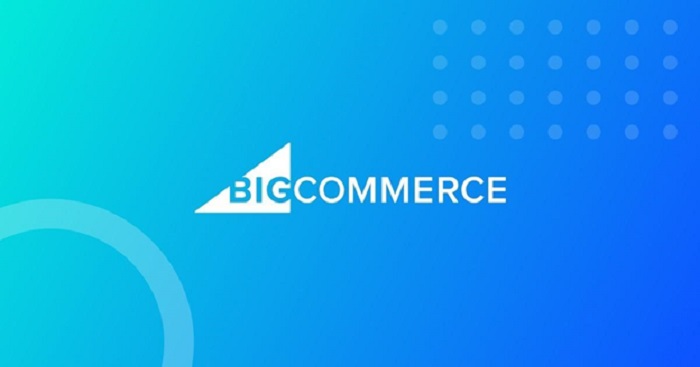
Today, when the world enters the industrial era 4.0, all goods trade between people, between stores, between businesses or more widely, between countries becomes extremely easy. Get a computer, create a sufficiently powerful bandwidth and transactions will be done quickly.
But is the truth so easy? No, my friend!
The above method is usually only suitable for personal transactions. But if you want to specialize your business like delivering goods quickly, sourcing more stock … then eCommerce platforms like Shopify or BigCommerce will become a much more efficient solution.
These are all the foundations that have built me a reputation, but which is the better choice? The article will probably give you an extra perspective (just personal opinion!). And you know, sometimes switching between different platforms is good for your work. Let’s see how we can do that!
Shopify and BigCommerce – Two rivalries
We can simply understand that these are all online service tools. They all work on web platforms so you won’t have to waste time installing or spending extra money on add-ons to be able to add any backend functionality.
The strength of both Shopify and BigCommerce is to provide users with a very large network space to store data designed specifically for business.
More symbolically, you own a warehouse, a showroom, and an e-store at the same time.
Besides, they provide design templates for you to personalize your booth to make a better impression on users. One of the other advantages is that you can manage the store remotely with a laptop or even a phone.
Also, minimizing labor, managing neglected shopping carts, marketing products, or sometimes even blogging are also great strengths of both Shopify and BigCommerce.
About BigCommerce
BigCommerce is the world’s leading all-in-one e-commerce platform for small and medium retailers (SMBs) with all the features you need to open, promote, manage, and expand your online store effectively.
Founded in 2009, the company’s headquarters are located in Austin, Texas. Currently, BigCommerce is serving more than 170 thousand online stores around the world.
Some of the major features of BigCommerce include:
- Free and paid themes are easy to customize
- Safe shopping cart
- Integrate with major payment gateways such as Stripe, PayPal, skrill, Apple Pay…
- Lots of marketing tools including the ability to sell on multiple platforms like Amazon Marketplace, Facebook, eBay, Pinterest, integration with multiple email providers, and more.
- Inventory, shipping, and return management systems
- Supports multiple currencies
- Dropshipping & warehouse integration
I will not go into depth to analyze each feature (see you in the next article). However, any platform cannot achieve perfection. And with BigCommerce we have:
Pros
- Powerful marketing features include the ability to sell on third-party platforms.
- POS integration
- No transaction fees
- Payment on a single page
- The interfaces are compatible with mobile phones
- Comprehensive support
- Affordable credit card processing fees
Cons
- Interface for fewer options
- Fewer apps to choose from when going with third-party integrations
- No mobile app available
In terms of age, Shopify deserves to be “a predecessor” of BigCommerce when it was born in 2004.
Shopify is an e-commerce platform that allows you to create an online shopping website with shopping cart and checkout features, order processing, omnichannel sales, marketing automation.
The platform was created by Shopify Inc., a Canadian multinational e-commerce company headquartered in Ottawa, Ontario.
With its user-friendly and easy-to-use interface, you can easily create a website to sell dropship or sell POD t-shirts in just 30 minutes. As of 8/2020, more than 1,000,000 customers are using the platform, making Shopify the # 1 e-commerce platform in the world.
Shopify
Unlike platforms like Magento or OpenCart, which require you to know the website, hosting, or HTML to use. Shopify is designed for everyone, you don’t need any programming skills to get started with Shopify.
Key features of the Shopify online store platform include:
- A large selection of themes is available from Shopify and a lot of Shopify’s more professional themes are available on our ThemeForest marketplace with responsive designs.
- Integrate with over 70 payment + payment gateways from Shopify
- Marketing and SEO features like integration with email providers, social media, and the ability to sell on Facebook.
- Inventory management
- Mobile application for you to manage your stores on the go
- Over a long period of development, Shopify Inc. has made its product extremely comprehensive. From the comments collected by users, I have summarized a few things about Shopify as follows.
Pros
- Lots of interface choices
- Lots of third-party apps to choose from
- POS integration
- More payment gateways are available
- Better classification of products, where you can create product collections
Cons
- Their most expensive packages cost more than BigCommerce
- Inability to sell on third party markets
- Abandoned cart recovery email has an hourly limit.
- Limited product variations
- Using an external payment gateway that includes a transaction fee of 2.0% to 0.5%
BigCommerce And Shopify – Hard Decision
What is your decision? I don’t think there is a standard in this selection. You find one platform works for your store, the other easy to interact with and reach out to, so go collaborative.
But to me, Shopify seems to have a pretty far gap in class compared to BigCommerce.
All of Shopify’s points that I listed are ultimately only around the user fee issue, which is quite unimportant while BigComerce lacks the entire mobile app array and is quite weak in exploiting 3rd party profits. And in my opinion, if you need a platform to build your online store, Shopify can do it better than BigCommerce.
So when you’re ready for a change, is it easy to do? In essence, this is a job that takes a lot of skills no matter what way you do it. There are 2 ways you can do this: Manual and Automatic Migration.
Manual Migration
If you’re running the store alone, this can be quite a daunting task. Depending on the size of the store, the amount of data required to migrate can be very large. Time and strong technical skills will be the elements required to ensure complete data migration.
Hiring more staff for this can also shorten the time, but will cause a lot of waste and to a certain extent, mistakes can still happen.
Automatic Migration
Thanks to algorithmic algorithms, online services/tools/converters were created to help maximize data migration. The execution time is only a few hours and you will no longer need to pay any extra labor.
And with the advancement of technology, why do we have to waste time and manpower on manual ways? Let technology show its power.
Migration from BigCommerce to Shopify
With the BigCommerce to Shopify migration tool provided by Next-Cart, all your BigCommerce data from categories, products, to customers, orders, etc will be moved to Shopify precisely.
I choose Next-Cart to perform this task. Fast and efficient, are the features that I noticed with this online tool. Not only is the tool automatic, but the service is also exceptional. I got supported almost instantly by a super friendly and helpful technician. Now, let’s see how the tool works:
#Step 1: Set up Source Cart
Simply paste the BigCommerce URL and your API information in the appropriate boxes. You can rest assured because the instructions will be extremely easy to understand.
#Step 2: Set up Target Cart
Similar to the Source Cart, but this time our audience is Shopify.
#Step 3: Select data you want to migrate
This is your special attention as I know no one wants to miss out on important data. Products, categories, customers, orders … are important information fields that you should pay attention to first.
Additional Options and Advance Attributes Mapping will give you the freedom to adjust the migration.
#Step 4: Perform full migration
Complete all 3 steps above and you will be empowered to migrate from BigCommerce to Shopify. The migration may take a bit of time to migrate everything; so, take a rest and enjoy a cup of coffee.
When you receive the CONGRATULATIONS message, you migrate successfully.
Closing Thought
In general, changing an e-commerce platform is not easy for anyone. But sometimes the same change makes a turning point for your “money-making career”. Hope my tutorials above will make it easier for you. Once you have chosen the right platform, migrate your data quickly because you know it’s something that needs to be done as soon as possible.
In addition to Shop Importer and Next-Cart, do you know how to migrate data? Share now with us!

